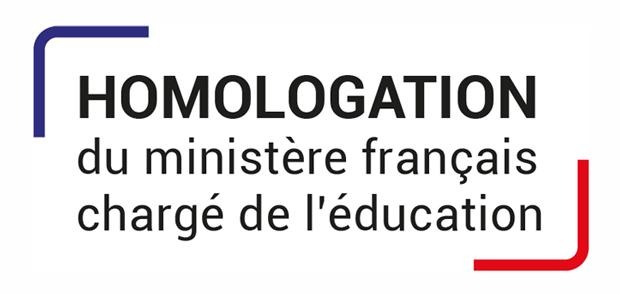Cycle 1
Cycle 2
Cycle 3
Cycle 4
Cycle 1
Preschool a unique and fundamental cycle
The main objective of the preschool is to allow the child to become an independent student, that is to say to give the taste to go to school to learn, to assert and to develop his personality. To do this, it adapts to the rhythm of each person by developing motor, sensory, relational and intellectual capacities.
The learning is structured around 5 areas:
- Mobilize language in all its dimensions,
- Act, express yourself, understand through physical activity,
- Act, express oneself, understand through artistic activities,
- Build the first tools to structure your thinking,
- Explore the world.
In preschool:
8 hours are taught in English (a third of the time).These 8 hours are devoted either to the study of the language or to the teachings of DNL * (arts, sport, history).
The DNL lessons being provided in “co-intervention”, in the presence of a French-speaking teacher and an English-speaking teacher.
Cycle 2
Cycle of fundamental learning (CP, CE1, and CE2)
Our teaching method allows the gradual acquisition of the skills set by the French Ministry of National Education. The projects set up by the teaching teams include work based on skills (reading, scientific or transversal projects). It is about manipulating, experimenting, developing hypotheses, checking them and solving problems. All this, with the sole objective of allowing children to be actors in their learning. We do not want to inundate our students with information, but that they build their knowledge themselves.
Reading and writing are two closely related activities, the effectiveness of which is well articulated when practiced. They are acquired throughout schooling, in interaction with other learning; however, cycle 2 is a defining period.
At the end of the three years which now constitute this cycle, the student must have acquired an initial autonomy in reading a variety of texts, adapted to their age. The practice of these texts leads them to broaden the field of their knowledge, to increase references and models for writing, to increase the number of objects of curiosity or interest, to refine their thinking.
Reading and writing are two closely related activities, the effectiveness of which is well articulated when practiced. They are acquired throughout schooling, in interaction with other learning; however, cycle 2 is a defining period.
At the end of the three years which now constitute this cycle, the student must have acquired an initial autonomy in reading a variety of texts, adapted to their age. The practice of these texts leads them to broaden the field of their knowledge, to increase references and models for writing, to increase the number of objects of curiosity or interest, to refine their thinking.
Cycle 3
Consolidation cycle (CM1, CM2 and 6th)
Cycle 3 now links the last two years of primary school and the first year of middle school, with a stronger concern for pedagogical continuity and consistency of learning in the service of the acquisition of a common base of knowledge, skills and culture. . The 6th class occupies a special place in the cycle: it allows students to adapt to the pace, the pedagogical organization and the living environment of the college while being in the continuity of the learning undertaken in CM1 and CM2.
Cycle 4
advanced cycle (5th, 4th and 3rd classes)
EFIC students attend high school classes face-to-face, via the CNED (National Distance Learning Center) which provides them with course materials, homework and monitors their schooling (class councils, move to a higher class, etc.). In addition to this, you need to know more about it.
On site, the students are supervised by teaching instructors who guide and help them throughout the year as part of a personalized program.
AEFE, the world's leading school network
The AEFE network, the world’s leading international education network, is established in 139 countries. Between 1990 and 2020, the number of students doubled.
The next ten years will be those of a further doubling of the number of students, the objective indicated by the President of the French Republic – the “Cap 2030” – being to reach 700,000 pupils in 2030.
The next ten years will be those of a further doubling of the number of students, the objective indicated by the President of the French Republic – the “Cap 2030” – being to reach 700,000 pupils in 2030.





